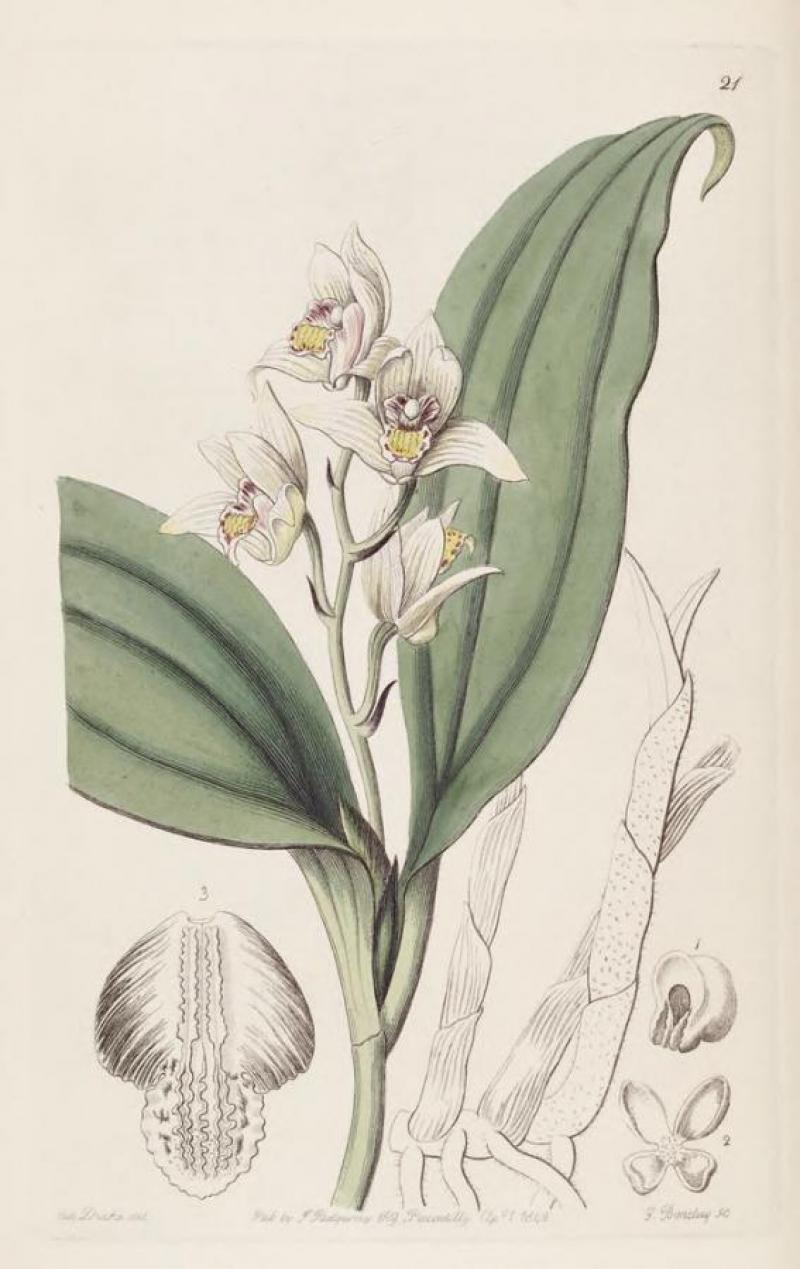Eria coronaria
Also known as: The Crowned Lip Eria or Trichosma suavis Trichosma cylindropoda Eria suavis Eria medogensis Eria cylindripoda in the subfamily: Epidendroideae
Native to: Guangdong - China Guangxi - China Sikkim - India Thailand Tibet - China
General Information
The Crowned Lip Eria is a large cool to warm growing epiphytic orchid belonging to the sub family Epidendroideae native to China, India and Thailand.
Plant Description
Grows to 30cm. Each new growth has numerous leathery lance shaped, oblong shaped leaves that grow to 3-15cm long. Pseudobulbs grow to 8-15cm
Flowers
Numerous fragrant blossoms appear throughout the year
Fragrance
The orchid is fragrant.
Blooming Season
- Autumn
- Spring
- Summer
- Winter
Substrate(s)
- Coarse
- Charcoal
- Spaghnum Moss
- Perlite
Care Notes
These orchids like to be watered regulary, especially during warm weather, and prefer a well draining mix or also do well mounted, provided they can be watered daily or even many times a day.
These are quite a forgiving orchid, there are no special requirements to get this orchid to flower, just good care and consistent conditions. Larger plants may be more fussy and can react poorly to change; a poorly timed repotting, a pest infection or an unusually hot day can set them back for a couple of years. However, even plants that have been treated poorly can thrive, and if they are set back they often recover much stronger then they would otherwise be.
Fragrant:- IsFragrant
Climate
Grows at low to high elevations. Rainfall ranges from 8mm to 798mm per day, heaviest in July and lightest in December. Humidity ranges from 73% to 95%, highest in July and lowest in March. Temperature ranges from 6C to 23C, highest in July (19C to 23C) and lowest in January (6C to 13C).
Watering
These orchids prefer a wet-dry cycle between waterings, they should be watered frequently but only when the moisture is approaching dryness, where the pot feels light and/or the media looks dry. Keep an eye on mounted orchids in warm weather as they may dehydrate quickly.
Fertiliser
Apply liquid based fertiliser per recommended directions. They can benefit from a high phosphate fertiliser leading up to flowering season, followed by a high nitrogen fertiliser when new growth appears, and a balanced fertiliser in other times. These orchids can also tolerate slow release fertiliser applied 1-2 pellets per cup (250ml) of media.
Use balanced fertiliser year round. Apply fertiliser regularly at half strength year round. Use a high Phosphorous fertiliser during Summer and Winter.Potting
These plants are quite forgiving and will do well repotted ever 2-3 years. The mix should be coarse, well draining, and allow space for air to move and for roots to grow.
Alternatively, these plants will also do well mounted to tree fern or cork slabs, or mounted to trees.
Best time for repotting or mounting the orchids is the end of winter when new growths start to appear. Avoid repotting during hot weather,
Repotting is best done annually.




